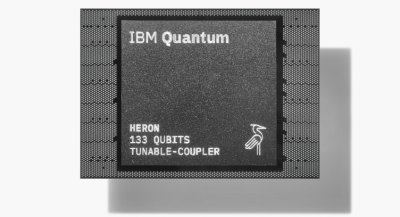At the annual IBM Quantum Summit in New York, IBM debuted 'IBM Quantum Heron,' the first in a new series of utility-scale quantum processors with an architecture engineered over the past four years to deliver IBM's highest performance metrics and lowest error rates of any IBM Quantum processor to date.
IBM also unveiled IBM Quantum System Two, the company's first modular quantum computer and cornerstone of IBM's quantum-centric supercomputing architecture. The first IBM Quantum System Two, located in Yorktown Heights, New York, has begun operations with three IBM Heron processors and supporting control electronics.
With this critical foundation now in place, along with other breakthroughs in quantum hardware, theory, and software, the company is extending its IBM Quantum Development Roadmap to 2033 with new targets to significantly advance the quality of gate operations.
As demonstrated by IBM earlier this year on a 127-qubit 'IBM Quantum Eagle' processor, IBM Quantum systems can now serve as a scientific tool to explore utility-scale classes of problems in chemistry, physics, and materials beyond brute force classical simulation of quantum mechanics.
IBM is also detailing plans for a new generation of its software stack, within which Qiskit 1.0 will be a pivot point defined by stability and speed. Additionally, and with the goal of democratizing quantum computing development, IBM is announcing Qiskit Patterns.
Dario Gil, IBM SVP and Director of Research
We are firmly within the era in which quantum computers are being used as a tool to explore new frontiers of science. As we continue to advance how quantum systems can scale and deliver value through modular architectures, we will further increase the quality of a utility-scale quantum technology stack – and put it into the hands of our users and partners who will push the boundaries of more complex problems.
Jay Gambetta, Vice President and IBM Fellow at IBM
Generative AI and quantum computing are both reaching an inflection point, presenting us with the opportunity to use the trusted foundation model framework of watsonx to simplify how quantum algorithms can be built for utility-scale exploration. This is a significant step towards broadening how quantum computing can be accessed and put in the hands of users as an instrument for scientific exploration.






















